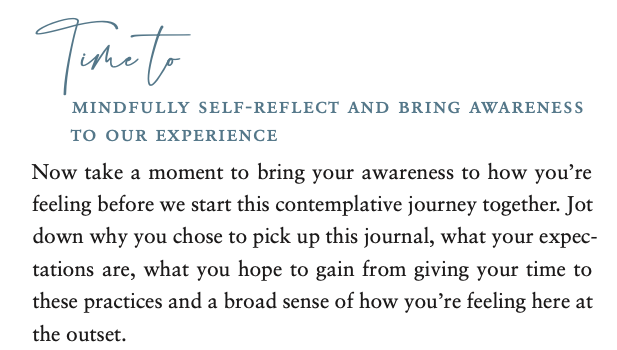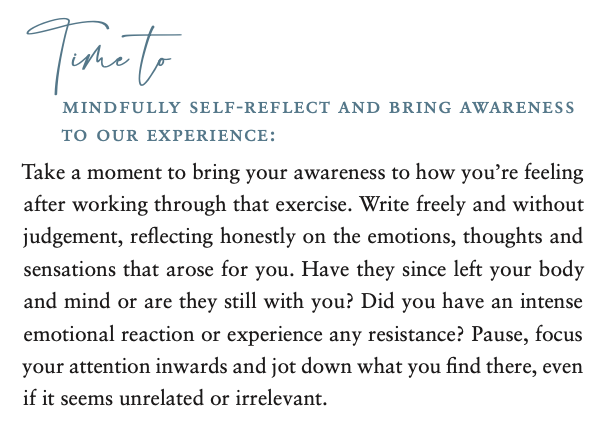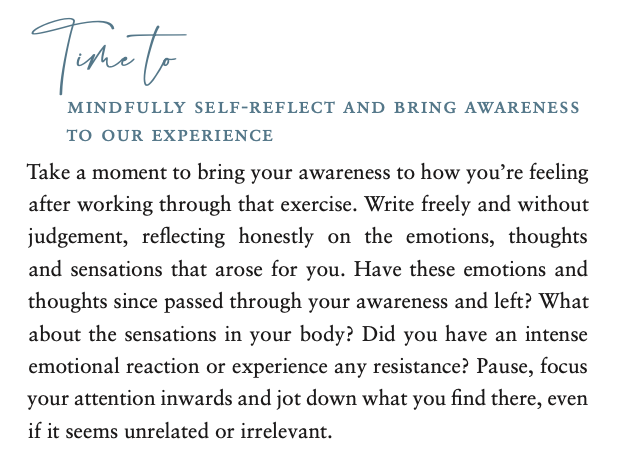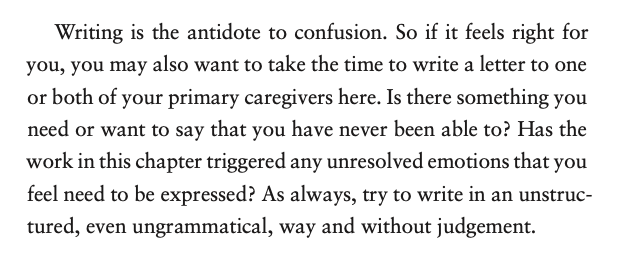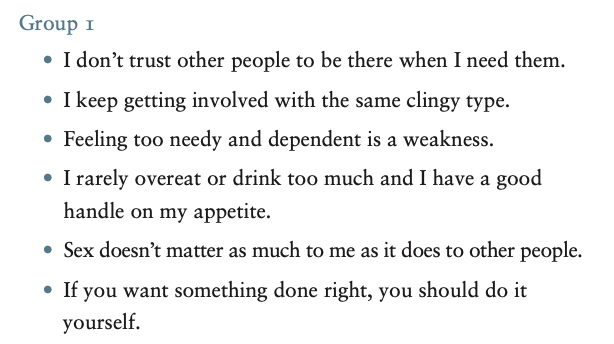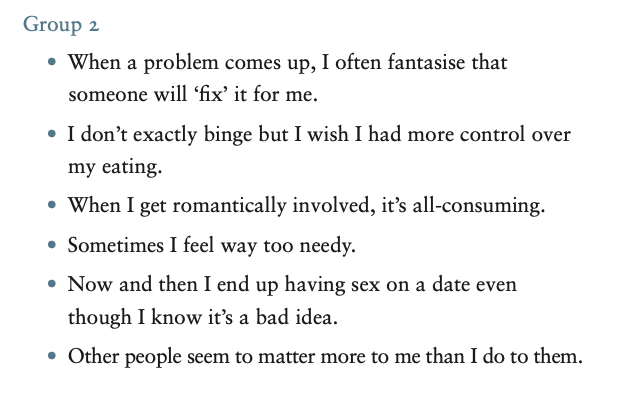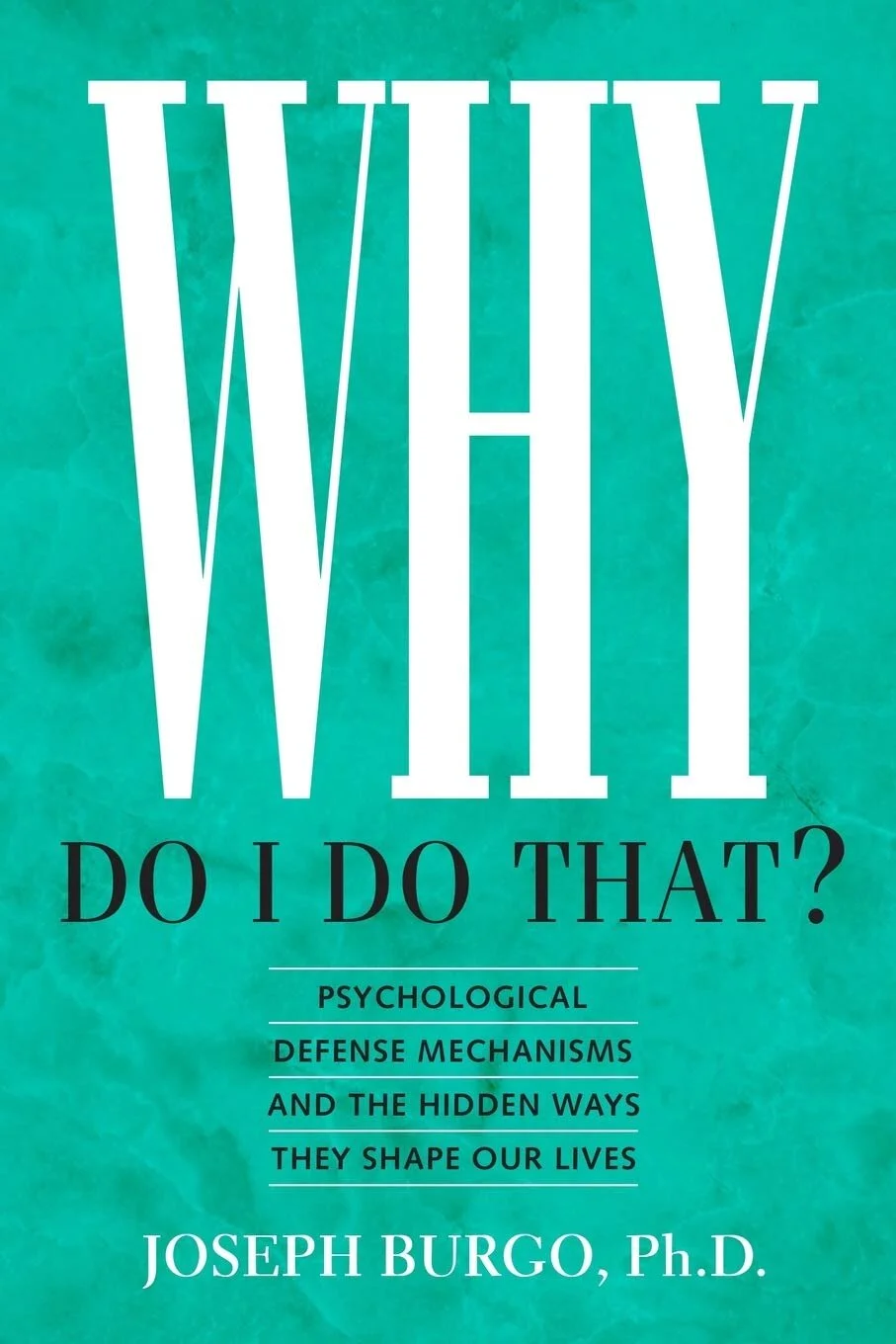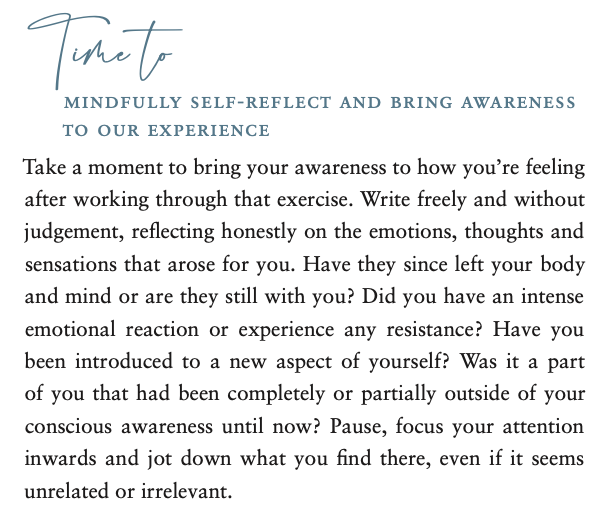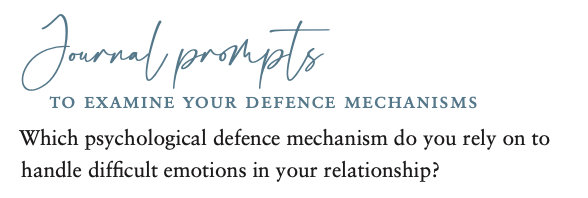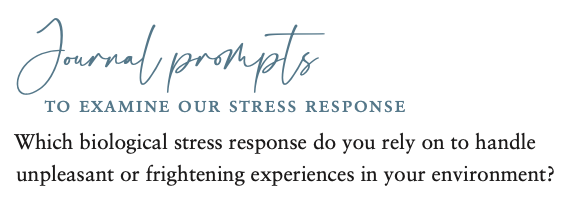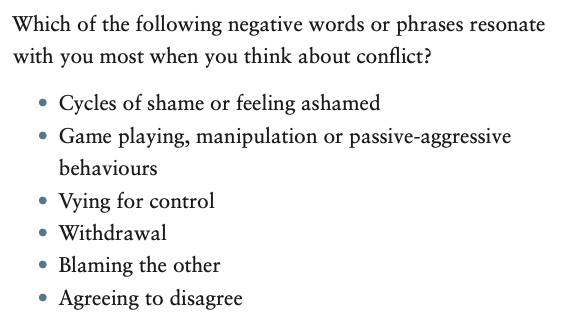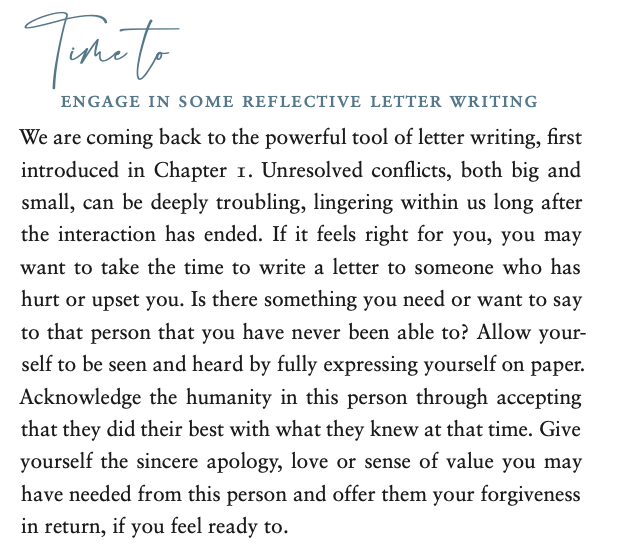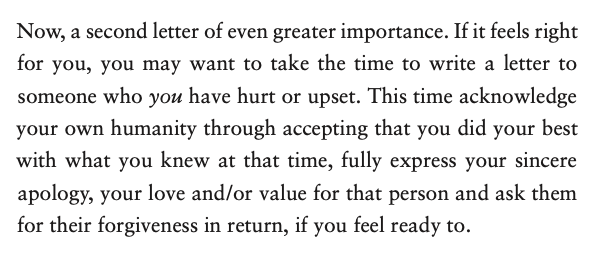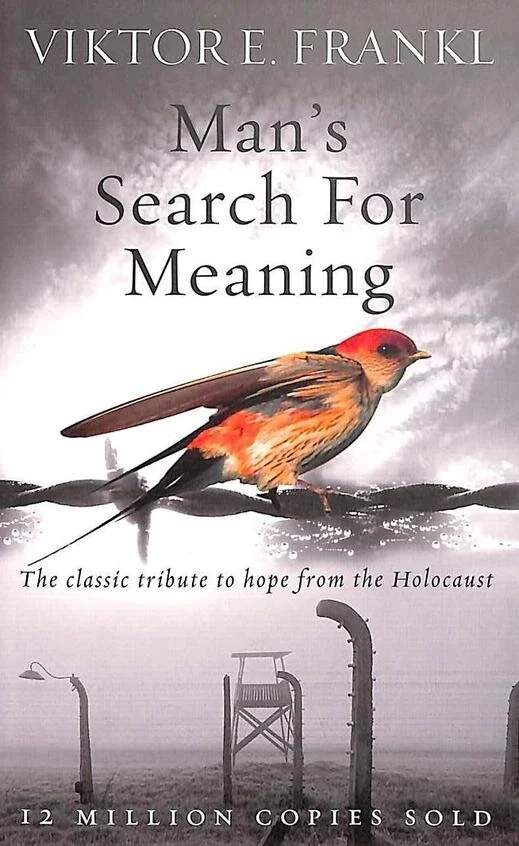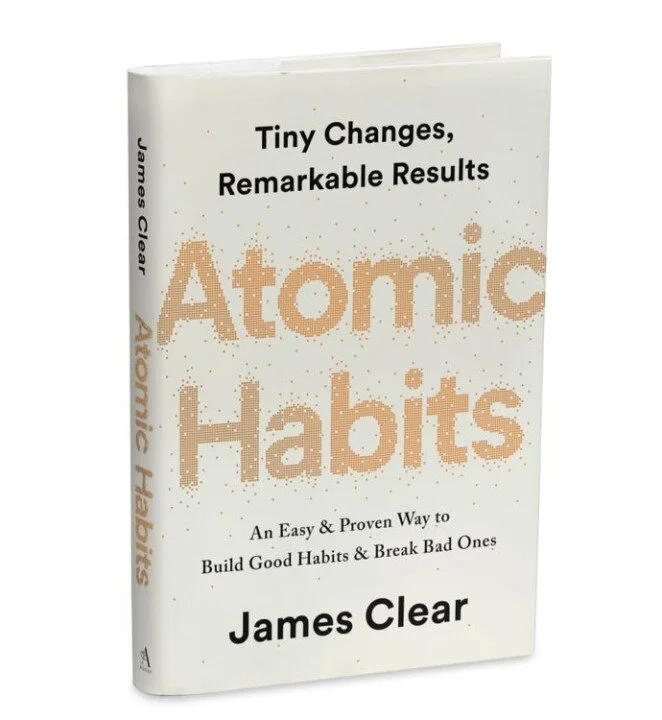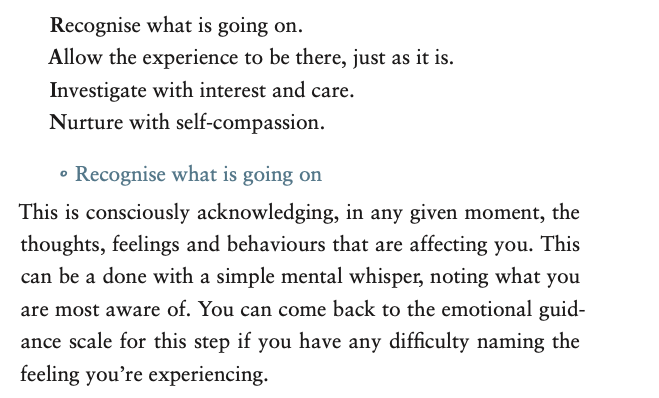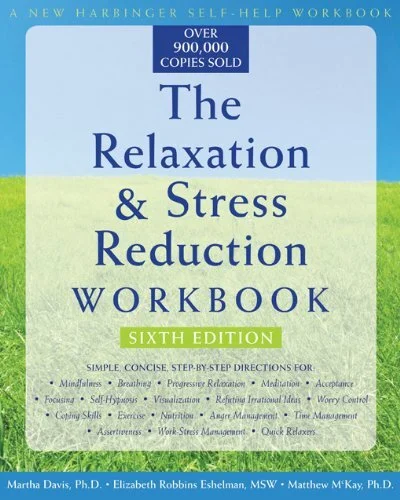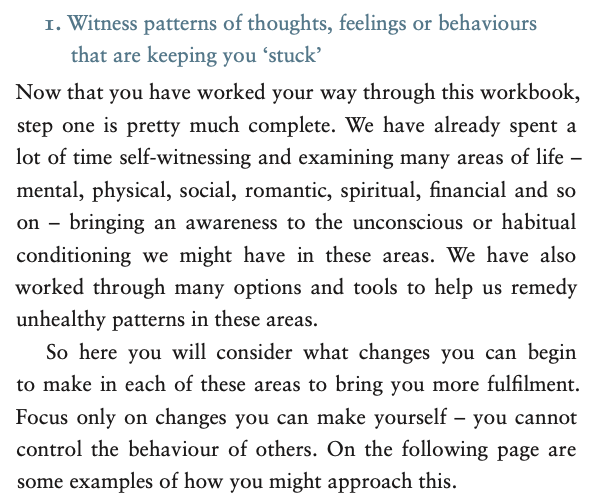
Welcome to your online resource hub for the
Jump Start Journal audiobook.
Jump Start.
A fully guided journal for self-healing, helping you to build self-awareness to better understand and train your mind.
“An untrained mind - even a perfectly normal one - can be an extraordinarily unhappy place”
— Sam Harris
Introduction.
Questions to examine resistance?
Introduction, Journal Prompt:
Introduction, Self-Reflection:
“The first five years have so much to do with how the next eighty will turn out.”
— Bill Gates
Chapter 1.
Early Childhood Experience & Attachment Theory.
ACE Study, Self-Reflection:
Mary Ainsworth’s ‘Strange Situation’ Experiment:
Finding Your Attachment Style:
Psychology Today Attachment Style Test
Attachment Theory, Recommended Reading:
Attachment Theory, Self-Reflection:
Chapter 1, Letter Writing Prompt:
“Unless you make the unconscious conscious, it will direct your life and you will call it fate”
— Carl Jung.
“There are three things extremely hard: steel, a diamond and to know one’s self”
— Benjamin Franklin
Chapter 3.
Navigating Conflict.
Navigating Conflict, Journal Prompts:
Navigating Conflict, Self-Reflection:
Chapter 3, Letter Writing Prompt:
Chapter 3, Second Letter Writing Prompt:
“Ultimately happiness comes down to choosing between the discomfort of becoming aware of your mental afflictions and the discomfort of being ruled by them”
— Yongey Mingyur Rinpoche
Chapter 4.
Managing Intense Emotions.
Managing Intense Emotions, Recommended Reading:
Micro-Meditations, Recommended Reading:
Emotional Guidance Scale:
RAIN technique:
CBT Techniques, Cognitive Reappraisal with Socratic Questioning:
CBT Techniques, The ABC Technique:
CBT Techniques, Cognitive Restructuring:
CBT Techniques, Recommended Reading:
Managing Intense Emotions, Self-Reflection:
“Rule number one is, don’t sweat the small stuff. Rule number two is, it’s all small stuff.”
— Robert S. Eliot
Chapter 5.
Understanding & Handling Stress.
The Human Performance Curve:
Unhealthy Stress Response, The Stairway to Burnout:
Healthy Stress Response, Voluntary Down-Regulation:
The Hallmarks of the Fight or Flight Response:
Ten Tools to Disrupt the Accumulation of Stress, in Just 60 Seconds:
Two Additional Stress Relieving Tools :
Understanding & Handling Stress, Journal Prompts:
Understanding & Handling Stress, Guided Relaxation Resources:
The STLL downloadable courses.
The STLL online and in-person events.
The STLL informative articles.
Your 7-Day Stress Diary Template:
“Your beliefs become your thoughts,
Your thoughts become your words,
Your words become your actions,
Your actions become your habits,
Your habits become your values,
Your values become your destiny.”
— Gandhi
Chapter 6.
Core Personal Values.
Discover Your Core Personal Values, Step 1:
Discover Your Core Personal Values, Step 2:
Discover Your Core Personal Values, Step 3:
Discover Your Core Personal Values, Step 4:
Discover Your Core Personal Values, Final Consideration:
Core Personal Values, Self-Reflection:
“Why do you stay in prison when the door is wide open?”
— Rumi
Chapter 7.
Self-Limiting Beliefs and Negative Self-Talk.
Identifying Your Self-Limiting Beliefs:
Examining Your Self-Limiting Beliefs, Journal Prompt:
Remedying Your Self-Limiting Beliefs:
Discovering Your Strengths of Character :
VIA Character Strengths Survey
Remedying Your Self-Limiting Beliefs, Journal Prompt:
Communicating With Ourselves , 4 Types of Self-Talk:
The 10 Most Common Cognitive Distortions:
Morning Affirmations:
Morning Affirmations, Journal Prompt:
Reframing Questions:
Chapter 7, Letter Writing Prompt:
“In every walk with nature, one receives far more than he seeks”
— John Muir
Chapter 8.
The Science of Awe and Gratitude.
Healthy & Unhealthy Heart Rate Variability:
Cultivating More Daily Awe, Journal Prompts:
Cultivating More Daily Gratitude, Three Good Things:
Cultivating More Daily Gratitude, The Gratitude Letter:
Cultivating More Daily Gratitude, Mental Subtraction of Positive Events:
Cultivating More Daily Gratitude, Give it Up:
“The greatest happiness of life is the conviction that we are loved; loved for ourselves, or rather, loved in spite of ourselves.”
— Victor Hugo
Chapter 9.
Love & Relationships.
Love & Relationships, Recommended Reading:
Love & Relationships, Childhood Journal Prompts:
Love & Relationships, Childhood Self-Reflection:
Discovering Self-Worth, Journal Prompt:
Discovering Your Authentic Desires in a Partner, Journal Prompts:
Discovering Your Authentic Desires in a Partner, Self-Reflection:
A Question to Consider When Learning to Set Personal Boundaries:
Discovering the Origins of Our Low Self-Worth, Journal Prompts:
Discovering the Origins of Our Low Self-Worth, Self-Reflection:
When to Walk Away, Journal Prompts:
The Kübler-Ross Change Curve:
For Those in Love, Recommended Reading:
For Those in Love, Self-Reflection:
Chapter 9, Letter Writing:
“The best way to predict your future is to create it.”
— Alan Kay
Chapter 10.
Future-Self Journaling.
Future-Self Journaling, The 5 Steps:
Future-Self Journal Template:
References:
1. Vincent J. Felitti, Bob Anda et al., ‘Relationship of Childhood Abuse and Household Dysfunction to Many of the Leading Causes of Death in Adults: The Adverse Childhood Experiences (ACE) Study’, American Journal of Preventive Medicine 14.4, 1998, pp. 245–58.
2. Rachel Yehuda and Amy Lehrner, ‘Intergenerational Transmission of Trauma Effects: Putative Role of Epigenetic Mechanisms’, World Psychiatry 17.3, 2018, pp. 243–57.
3. ‘The Challenges of Anxious-Avoidant Relationships’, The School of Life.
4. Joseph Burgo, Why Do I Do That? Psychological Defense Mechanisms and the Hidden Ways They Shape Our Lives, New Rise Press, 2012, p. 20.
5. Burgo, p. 20.
6. Burgo, p. 21.
7. Scott Atran, Robert Axelrod and Richard Davis, ‘Sacred Barriers to Conflict Resolution’, Science 317.5841, 200, pp. 1039–40.
8. Elissa Epel, Jennifer Daubenmier et al., ‘Can Meditation Slow Rate of Cellular Aging? Cognitive Stress, Mindfulness and Telomeres’, Annals of the New York Academy of Sciences 1172.1, 2009, pp. 34–53. Britta K. Hölzel, James Carmody et al., ‘Mindfulness Practice Leads to Increases in Regional Brain Gray Matter Density’, Psychiatry Research: Neuroimaging 191.1, 2011, pp. 36–43.
9. For more about somatic experiencing, see Peter Levine, In an Unspoken Voice, North Atlantic Books, 2010; Peter Levine, Waking the Tiger, North Atlantic Books, 2017; Robert Sapolosky, Why Zebras Don’t Get Ulcers, St Martin’s Press, 2004.
10. Gaétan Chevalier, Stephen T. Sinatra et al., ‘Earthing: Health Implications of Reconnecting the Human Body to the Earth’s Surface Electrons’, Journal of Environmental and Public Health, 2012.
11. David Tod, James Hardy and Emily Oliver, ‘Effects of Self-Talk: A Systematic Review’, Journal of Sport and Exercise Psychology 33.5, 2011, pp. 666–87.
12. Emily B. Falk, Matthew Brook O’Donnell et al., ‘Self-Affirmation Alters the Brain’s Response to Health Messages and Subsequent Behavior Change’, Proceedings of the National Academy of Sciences 112.7, 2015, pp. 1977–82. Christopher N. Cascio, Matthew Brook O’Donnell et al., ‘Self-Affirmation Activates Brain Systems Associated with Self-Related Processing and Reward and is Reinforced by Future Orientation’, Social, Cognitive and Affective Neuroscience 11.4, 2016, pp. 621–9.
13. Robert Emmons, ‘Why Gratitude Is Good’, Greater Good Magazine, 16 November 2010.
14. These are based on the work of emotional health advisor Roxie Nafousi at her Relationships Online Workshop.




